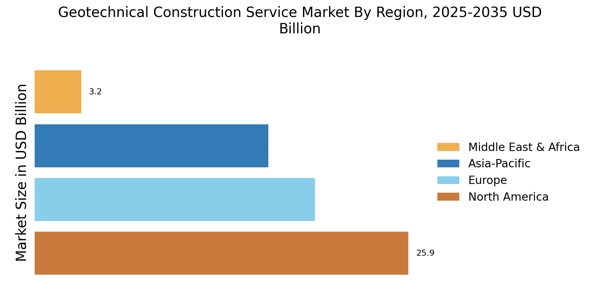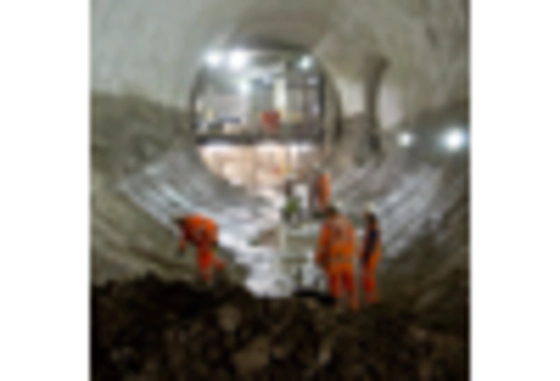Urbanization and Population Growth
Urbanization and population growth are driving significant changes in the Geotechnical Construction Service Market. As more people migrate to urban areas, the demand for housing, infrastructure, and public services intensifies. This rapid urban expansion necessitates comprehensive geotechnical assessments to ensure that new developments are safe and sustainable. The market is witnessing an increase in projects that require detailed soil analysis and foundation design, particularly in densely populated regions. According to recent estimates, urban areas are expected to house nearly 70% of the world's population by 2050, which could lead to a substantial rise in geotechnical service requirements. Consequently, the Geotechnical Construction Service Market is positioned to grow in response to these demographic shifts.
Regulatory Frameworks and Standards
The establishment of regulatory frameworks and standards is a pivotal driver for the Geotechnical Construction Service Market. Governments and regulatory agencies are implementing stringent guidelines to ensure safety and quality in construction practices. These regulations often mandate comprehensive geotechnical investigations and reporting, which in turn drives demand for specialized services. Compliance with these standards is essential for project approval and successful execution, leading to an increased reliance on geotechnical professionals. As regulations evolve, the Geotechnical Construction Service Market is likely to expand, with firms investing in expertise and technology to meet these requirements. This trend underscores the importance of adhering to established standards in maintaining safety and integrity in construction.
Infrastructure Development Initiatives
The ongoing emphasis on infrastructure development initiatives appears to be a primary driver for the Geotechnical Construction Service Market. Governments and private entities are increasingly investing in transportation, energy, and urban development projects. For instance, the construction of roads, bridges, and tunnels necessitates specialized geotechnical services to ensure stability and safety. In recent years, the market has witnessed a surge in demand for geotechnical investigations and soil testing, which are critical for project feasibility and design. This trend is likely to continue as urbanization accelerates, with projections indicating that The Geotechnical Construction Service Market could reach trillions in value by the end of the decade. Consequently, the Geotechnical Construction Service Market is poised for growth as it supports these expansive infrastructure projects.
Increased Awareness of Environmental Impact
The heightened awareness of environmental impact is emerging as a crucial driver for the Geotechnical Construction Service Market. Stakeholders are increasingly recognizing the importance of sustainable practices in construction, which includes the assessment of soil and geological conditions to minimize ecological disruption. This trend is reflected in the growing demand for environmentally responsible geotechnical services, such as eco-friendly soil stabilization and remediation techniques. Regulatory bodies are also imposing stricter environmental guidelines, compelling construction firms to adopt sustainable practices. As a result, the Geotechnical Construction Service Market is likely to see an uptick in services that align with these environmental standards, fostering a more sustainable approach to construction.
Technological Advancements in Geotechnical Engineering
Technological advancements in geotechnical engineering are significantly influencing the Geotechnical Construction Service Market. Innovations such as 3D modeling, geospatial analysis, and advanced soil testing techniques are enhancing the accuracy and efficiency of geotechnical assessments. These technologies enable engineers to better understand subsurface conditions, leading to improved design and construction practices. The integration of artificial intelligence and machine learning in data analysis is also emerging, potentially revolutionizing how geotechnical data is interpreted. As these technologies become more accessible, the demand for sophisticated geotechnical services is expected to rise, thereby driving the market forward. The Geotechnical Construction Service Market is likely to benefit from these advancements, as they facilitate more informed decision-making in construction projects.


















Leave a Comment